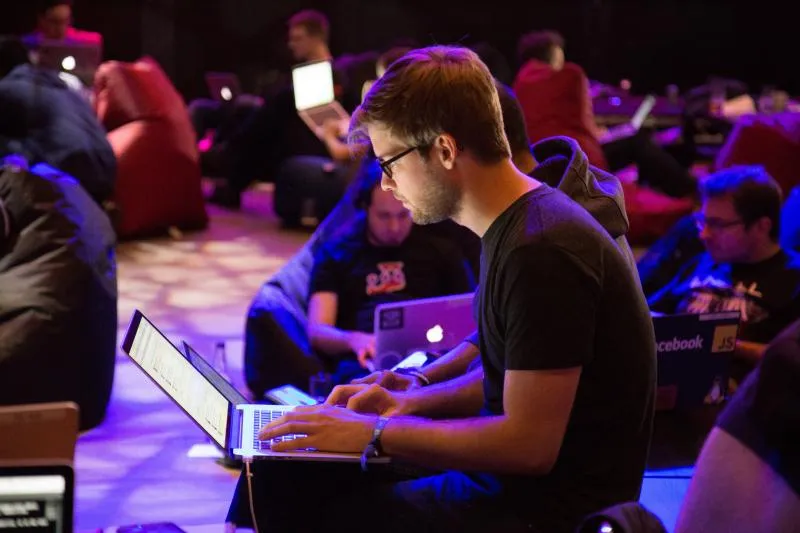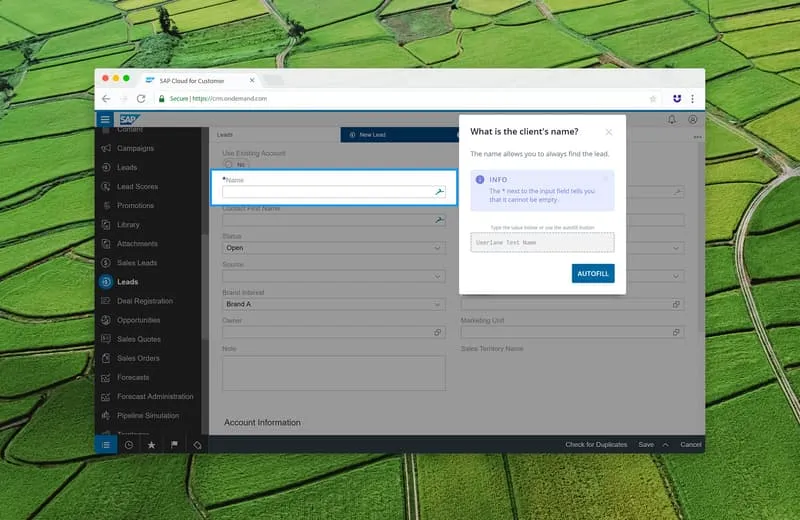Discover Great Product Tours

Have you ever heard the expression “Calgary is the Paris of North America?”.
Me neither.
That’s because not many people would actually say that. When you think of Calgary, Alberta you either have no associations whatsoever or, as a tourist, you have a picture in mind which is probably not the perfect definition of ‘romantic’.
It’s a beautiful city. But tourists basically interpret it as a getaway to the Rockies or as just as an obligatory stop during the Calgary Stampede.
I’m biased. I have great memories connected to events that are inseparable from emotions. But I bet that if I could be your tour guide for a day you’d fall in love with the city as well.
Why?
a) Because I know more than you about the place
b) Because I know things which are difficult to find on websites and tourist guides
c) Because I could interact with you and find out what your likes and dislikes are to tailor your experience
d) Because my enthusiasm would be extremely contagious
Let’s see how these points relate to your product and how you can leverage them to create an awesome user experience from the get-go.

Table of Contents
Product Tours and User Onboarding
Right after signing up for your product, users are able to access your solution.
They need to set up their working environment, create a profile, and finally start exploring your software.
Now…
We all know that the worst thing you can do is let people aimlessly check things out without being productive. That’s a terrible onboarding experience.
The two main goals of a solid user onboarding process are speed-to-value and a great user experience that sets the mood for the upcoming relationship your user will have with your brand.
A product tour can take different forms. But the main idea is that you have to take the lead from the very beginning. Onboarding new users means being in charge and take full control of what happens in your application from the very beginning.
And this leads me to the very first point in the list mentioned above.
Nobody Knows Your Product Better Than You
Regardless of where you live, you will collect both positive and negative experiences about the location. Eventually, though, you get to know every restaurant, scenic point, store, and hidden place.
The same holds true for your product. It doesn’t matter if you’re an engineer, a product manager, a customer success manager, or a UX designer. Either you started developing your solution from the very beginning or you spent so much time dealing with it that you know every all the quirks and features (sorry Doug DeMuro for stealing your catchphrase 😉 !) and you can connect each one of them to a clear benefit.
That’s why it is YOU who has to take the user by the hand to show them around. You know where they have to start, what they need to do next, what key features they absolutely have to check out to immediately achieve great results and fall in love with your solution!
If you plan your trip to Calgary online or by using an old fashioned guide book you’ll end up spending time in some very classic spots like the Calgary Tower, Heritage Park, the city zoo…Awesome places, don’t get me wrong! But there is soooo much more to see and do.
Plus, if I were your guide, I would choose the right place at the right time. Like going to Crescent Road at dusk to enjoy the skyline or to Glenmore Park when you’d be more likely to see deer looking for food.
In your product, you know exactly what your users need to do and when. Creating a product tour means setting the order for the events that take place in your software to optimize the user experience.
The user can’t be left alone. They’ll never see your product from the same perspective you do.
Of course, you can welcome them with written instructions, or video tutorials. But this would simply delay the interaction with your product. Plus, this way, you won’t be actually guiding them by the hand while they discover your solution.
By offering a product tour you can provide a checklist of important events that need to occur in the best possible order, and you need to be with them throughout the entire discovery journey.

The whole experience needs to be as interactive as possible. If you bring people to your favorite scenic spot in town you don’t ask them to sit in the car first and watch a ten-minute video before actually going out and enjoying the view!
Which brings me to my next point…
A Product Tour Provides an Experience, Not Instructions
As mentioned in our list, there are certain things that can’t be conveyed in a guide book or Google Review.
A skilled guide has connections with the best restaurants, has insider information about exclusive locations, and access to secret events and places that locals aren’t usually so keen to share with tourists.
Visiting a place is very different from having a memorable experience there.
When I went to New York, my friends helped me discover the city one step at the time without telling me much about what we were doing. Telling is not as strong as showing!
With them, I discovered some incredible places and met amazing people. The whole experience started in a magical way!
A set of instructions don’t set the stage for a great experience. You have to be there and live in the moment to enjoy every single aspect of the experience.
Exactly the same way guide books, software handbooks and video tutorials only provide your users with a set of instructions which they may or may not follow.
And simple tooltips aren’t enough. Tooltips are basically pins on a Google map! They just point at things hoping that you’ll land there and possibly check that feature out.

Pointing at things doesn’t mean creating a product tour. And your users won’t be able to remember much of what you told them in a quick tooltip tour!
Again….don’t point and tell. You don’t want to postpone that incredible “aha moment” in which your users finally understand the full potential of your product and achieve their first results.
A great product tour creates a great experience while boosting speed-to-value.
A Product Tour is an Interactive and Fully Immersive Experience
As mentioned above, if I were your guide for one day I’d be able to decide what you need to see and when. I’d be the director who can create the entire storyboard that would allow you to experience a new town in the best way.
At the same time, I’d also be able to interact with you and ask you specific questions. There are so many options…and by knowing what you really like, I could customize the whole experience for you.

The first part of our journey would probably be collecting information from you to find out what you would like to experience, what food you like, if you’re outdoorsy, if you like horses or cars, sports, museums, parks, scenic views…
Based on the information you’d provide me with, I could create a specific tour that you’ll never forget.
The same thing should happen in your product.
A great product tour is interactive. You need to find out what your users want to achieve with your solution and show them the quickest and most memorable way to get there!
Different users might need different features and might have different expectations. You are the one who can create their user journey and tailor it to meet their needs and impress them.
Again…a knowledge base or video tutorials don’t provide that kind of customization required to segment users and create tailor-made onboarding tours!
Share Your Enthusiasm With Product Tours
A few days ago, I gave a marketing presentation. Lots of product managers and UX designers in the audience.
After the presentation, a product manager approached me with his problem. A very well known problem.
He mentioned that every time he meets potential customers at trade shows or similar events and shows them what his AR-based software can do, they all look at him in awe and immediately sign up for a trial. And most of these users eventually turn into customers.
Nothing like that happens when users discover his application online a try it on their own.
His software is kind of complicated. Users log in and try to achieve results but don’t know how to get there, and even if after a while they start to understand what they’re supposed to do, they still struggle to see the actual benefits. They only see the functionality of the application.

When you guide people through your application, they can see your enthusiasm and you can talk to them while they try it out. You can tell them why a particular feature is important or even unique, you can connect each feature with an immediate (albeit not immediately obvious) benefit, and experience your software through your own eyes.
The Ultimate Product Tour
To sum it all up, a great product tour:
- Is immersive
- Is interactive
- Is personalized
- Doesn’t delay interaction
- Doesn’t simply point at things but actually steers users through processes in real time
- Reduces time-to-value
- Provides real-time information on why certain features are so special
- Eliminates frustration and stress by creating a great user experience
- Allows you to create the whole discovery journey
- Provides a clear checklists of tasks that lead to success
In a word…a great product tour allows users to fall in love with your product the same way a local would help you gather an incredibly vivid and memorable experience in a city tour.
And even if we know that the best way to provide this kind of experience is sitting next to each user while they discover your solution, we’re also aware that this is not always possible and is definitely not a scalable solution.
I’d love to invite everyone to discover Calgary’s hidden secrets with me but the second best thing I can do is automating the process and for example use AR to virtually follow you through your exploration of the city (While I’m working on it….try to find a local and go to the city as soon as possible!)
That’s exactly what Onscreen Interactive Product Tours are designed for.

Software walkthroughs are designed to act as an additional layer on top of other software solutions to guide users in real time through processes in the application.
Onscreen interactive guidance can be used to support and train users but are extremely useful when it comes to creating interactive onboarding tours that meet all the criteria mentioned above.
Do you want to know more about tactics and strategies you can put in place to reduce friction during the user onboarding process?

